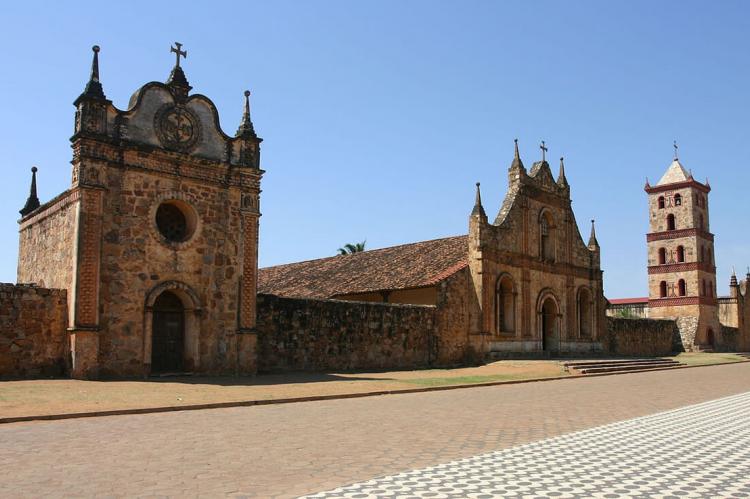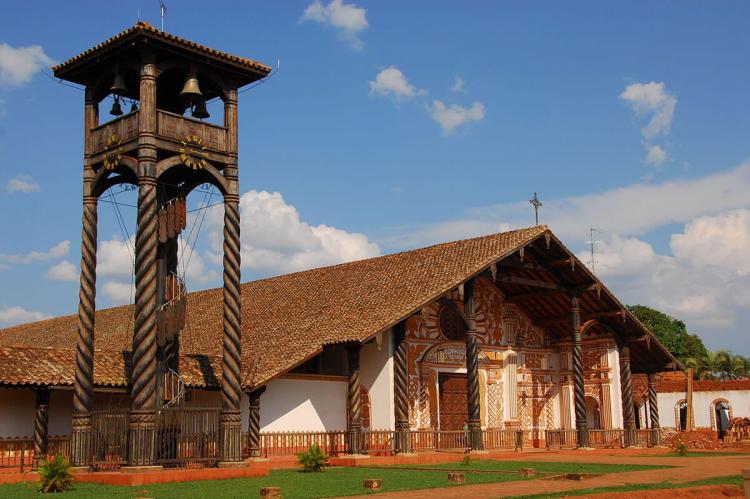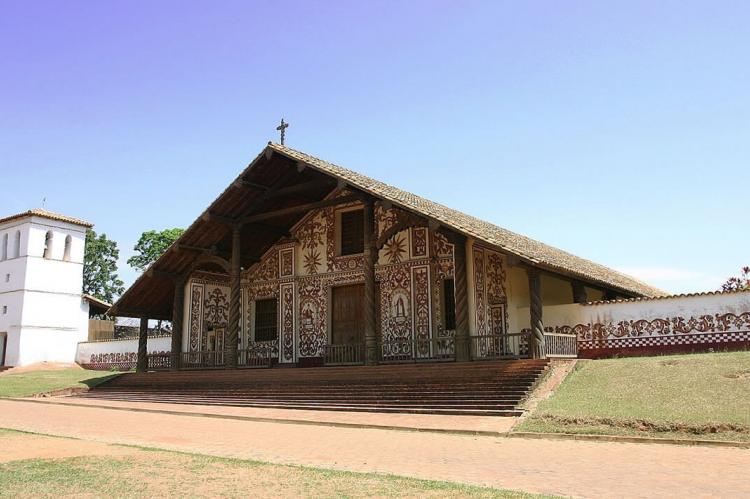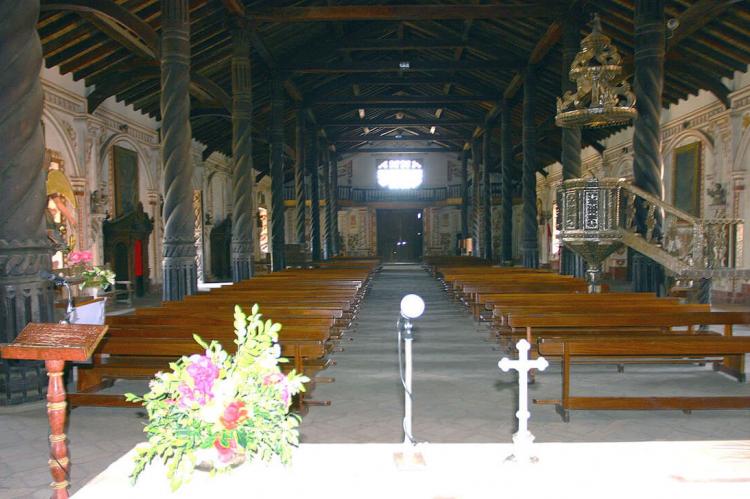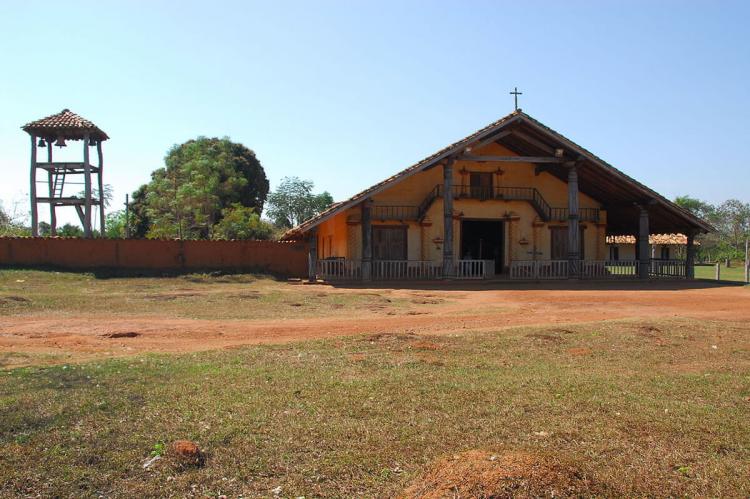Jesuit Missions of the Chiquitos (Bolivia)
The Jesuit Missions of the Chiquitos are located in the Santa Cruz Department in eastern Bolivia. Distinguished by a unique fusion of European and Amerindian cultural influences, the Jesuits founded the missions to convert local Chiquitano tribes to Christianity.
Jesuit Missions of the Chiquitos
The Jesuit Missions of the Chiquitos are located in the Santa Cruz Department in eastern Bolivia. Distinguished by a unique fusion of European and Amerindian cultural influences, the Jesuits founded the missions to convert local Chiquitano tribes to Christianity.
History
Between 1691 and 1760, a series of remarkable reducciones de indios (mission settlements of Christianized Indians) was founded by the Society of Jesus (Jesuits) in the Chiquitos territory of eastern Bolivia. They were primarily inspired by the "ideal cities" envisioned by 16th-century humanist philosophers.
The interior region bordering Spanish and Portuguese territories in South America was largely unexplored at the end of the 17th century. Dispatched by the Spanish Crown, Jesuits explored and founded eleven settlements in 76 years in the remote Chiquitania – then known as Chiquitos – on the frontier of Spanish America.
On the semiarid frontier, now known as Chiquitanía, the Chiquitano blended European architecture with local traditions. They built churches (templos) in a unique and distinct style that combined elements of native and European architecture.
The indigenous inhabitants of the missions were taught European music as a means of conversion. The missions were self-sufficient, with thriving economies and virtually autonomous from the Spanish crown.
After the expulsion of the Jesuit order from Spanish territories in 1767, most Jesuit reductions in South America were abandoned and fell into ruins. The former Jesuit missions of Chiquitos are unique because these settlements and their associated culture have survived largely intact.
Architecture
The idealized urban model for the missions featured houses for the Indians regularly spaced along the three sides of a rectangular square, with the fourth side reserved for the church, workshops and schools. The churches are remarkable examples of the adaptation of European Christian religious architecture to local conditions and traditions.
They resemble large houses with a gable roof overhanging a west gallery extended as a porch. Long walls defining three interior aisles divided by wooden columns and two exterior galleries, also supported by columns, constitute a unique type of architecture, distinguished by the special treatment of the carved wooden columns and railings.
The church at San José is the only exception, being of stone construction and inspired stylistically by a baroque model. In addition to rich interior decoration, many churches house remarkable popular art objects such as sculptures, paintings, altars and pulpits.
Restoration
Unlike other Jesuit missions in South America, the Jesuit Missions of the Chiquitos survived the expulsion of the Society of Jesus in 1767, though by the 1850s, the reducciones system of the missions had disappeared.
An extensive restoration project of the missionary churches began with the arrival of the former Swiss Jesuit and architect Hans Roth& in 1972. Since 1990, these former Jesuit missions have experienced some measure of popularity and have become a tourist destinations.
A famous biennial international musical festival put on by the nonprofit organization Asociación Pro Arte y Cultura, along with other cultural activities within the mission towns, contribute to the popularity of these settlements.
World Heritage Site
The six remaining missions were collectively designated as a World Heritage Site in 1990:
-
San Xavier: Initially established in 1691, the mission of San Xavier was the first of the missions listed in the World Heritage Site. In 1696, the mission was relocated toward the San Miguel River due to the incursion of Paulistas from Brazil in the east. In 1698, it was relocated closer to Santa Cruz, but in 1708 was moved away to protect the Indians from the Spaniards. The original inhabitants of San Xavier were the Piñoca tribe. The church was built between 1749 and 1752 by the Swiss Jesuit and architect Fr. Martin Schmid. The school, church, and other residential architecture characteristics are still visible in the village. Hans Roth restored San Xavier between 1987 and 1993.
-
San Rafael de Velasco: The mission of San Rafael de Velasco was the second mission built out of the six inscribed World Heritage Sites. Founded in 1695 by the Jesuits Fr. Juan Bautista Zea and Fr. Francisco Hervás, it was moved several times. The mission had to be moved in 1701 and 1705 because of epidemics in the region. In 1719 the mission was moved once more due to fire. Fr. Martin Schmid built the church between 1747 and 1749, which has survived. San Rafael de Velasco was restored between 1972 and 1996 as part of Hans Roth's restoration project.
-
San José de Chiquitos: Founded in 1698 by the Jesuits Fr. Felipe Suárez and Fr. Dionisio Ávila, the mission of San José de Chiquitos was the third mission built of those of the World Heritage Site. At first, the mission was inhabited by the Penoca tribe. The church was built between 1745 and 1760 by an unknown architect. It is built of stone, unlike other mission churches in the area, which were built with local adobe and wood. The mission is one of four that remain in their original location. A mortuary chapel (1740), the church (1747), a bell tower (1748), a house for the priests (colegio) and workshops (both 1754) still exist and were renovated by Hans Roth's restoration project between 1988 and 2003. Restoration efforts continue.
-
Concepción: The fourth mission in the World Heritage Site, the mission of Concepción, was initially founded in 1699 by the Jesuit priests Fr. Francisco Lucas Caballero and Fr. Francisco Hervás. A nearby mission, San Ignacio de Boococas, was incorporated in 1708. The mission was moved three times: in 1707, 1708 and 1722. The Chiquitanos, the largest tribe in the region, inhabited the mission. The mission church was constructed between 1752 and 1756 by Fr. Martin Schmid and Fr. Johann Messner. From 1975 to 1996, the mission was reconstructed as part of Hans Roth's restoration project.
-
San Miguel de Velasco: The fifth mission in the World Heritage Site, that of San Miguel de Velasco, was established by the Jesuits Fr. Felipe Suarez and Fr. Francisco Hervás in 1721. San Miguel was an offshoot of the mission of San Rafael de Velasco, where the population had grown too large. The mission church was built between 1752 and 1759, probably by Fr. Johann Messner, a collaborator with or student of Fr. Martin Schmid. Hans Roth restored the church between 1979 and 1983.
-
Santa Ana: The mission of Santa Ana de Velasco was the final World Heritage Site-inscribed mission to be established. It was founded by the Jesuit priest Fr. Julian Knogler in 1755. The original native inhabitants of the missions were the Covareca and Curuminaca tribes, who spoke dialects of the Otuke language. The mission church was designed after the expulsion of the Jesuits between 1770 and 1780 by an unknown architect and was built entirely by the indigenous population. The complex, consisting of the church, bell tower, sacristy and a grassy plaza lined by houses, is considered to have the most fidelity to the original plan of the Jesuit reductions. Starting in 1989 and lasting until 2001, the mission underwent partial restoration through the efforts of Hans Roth and his team.
